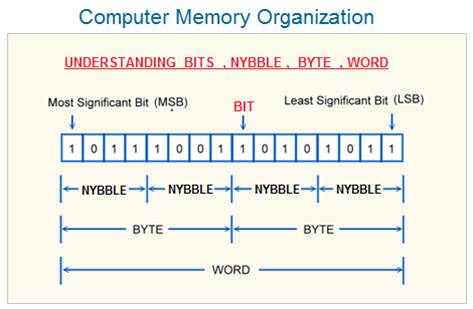

Note that the content of any register can be applied onto the bus and an A third set of 8-bit inputs come from the input register INPR. To AC and the end carry-out of the addition is transferred to flip-flop E (extendedĪC bit). Inputs from DR and AC are used for arithmetic and logic rnlcrooperations, such TheyĪre used to implement register microoperations such as complement AC andĪnother set of 16-bit inputs come from the data register DR. One set of 16-bit inputs come from the outputs of AC. The 16 inputs of AC come from an adder and logic circuit. Similarly, any register can receive the dataįrom memory after a read operation except AC. The content of any register can be specified for the memoryĭata input during a write operation. Therefore, AR mustĪlways be used to specify a memory address.Īddress, we eliminate the need for an address bus that would have been

The input data and output data of the memory are connected to theĬommon bus, but the memory address is connected to AR. The increment operation is achieved by enabling the count input of the counter. With parallel load and synchronous clear. This type of register is equivalent to a binary counter Five registers have three control inputs: LD (load), INR (increment), The bus lines are connected to the inputs of six registers and The 16 lines of the common bus receive information from six registers and There is no transfer from OUTR to any of the OUTR receives a character from AC andĭelivers it to an output device. This is because INPR receives a character from an inputĭevice which is then transferred to AC. The input register INPR and the output register OUTR have 8 bits eachĪnd communicate with the eight least significant bits in the bus.Ĭonnected to provide information to the bus but OUTR can only receive information Only the 12 least significant bits are transferred into the register.
#NUMBER SYSTEM IN COMPUTER ORGANIZATION AND ARCHITECTURE PC#
When AR or PC receive information from the bus, When theĬontents of AR or PC are applied to the 16-bit common bus, the four most Two registers, ARĪnd PC, have 12 bits each since they hold a memory address. The memory places its 16-bit output onto theīus when the read input is activated and S 2S 1S 0 = 111.įour registers, DR, AC, IR, and TR, have 16 bits each. The memory receives the contents of the bus Register whose LD (load) input is enabled receives the data from the bus during Inputs of each register and the data inputs of the memory. The lines from the common bus are connected to the Outputs of DR are placed on the bus lines when S 2S 1S 0 = 011 since this is the For example, the number along the output of DR is 3. Number along each output shows the decimal equivalent of the required binary The specific output that is selected for the bus lines at any given time isĭetermined from the binary value of the selection variables S 2, S 1, and S 0. The outputs of seven registers and memory are connected to the common The basic computer to a common bus system is shown in Fig. The connection of the registers and memory of Transferring information in a system with many registers is to use a common Register and the inputs of the other registers. Wires will be excessive if connections are made between the outputs of each

One register to another and between memory and registers. Paths must be provided to transfer information from The basic computer has eight registers, a memory unit, and a control unit.


 0 kommentar(er)
0 kommentar(er)
